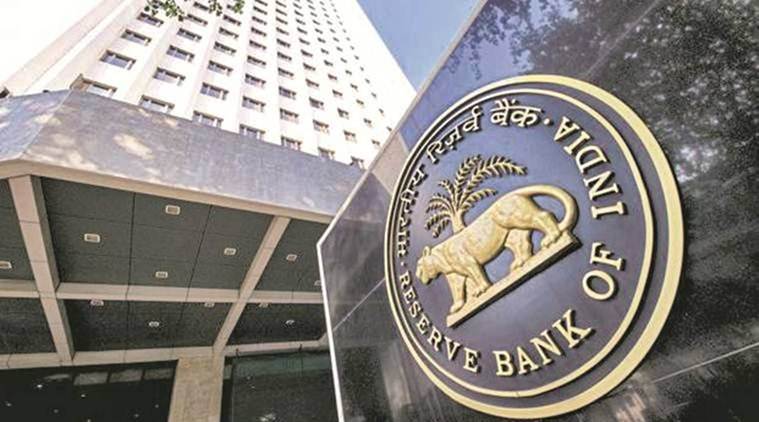- India
- International
Economy to contract, says RBI, cuts repo, extends moratorium
At an out-of-cycle meeting of its six-member monetary policy committee (MPC), 13 days before schedule, the panel cut the repo rate by 40 basis points to its lowest level in over 20 years, a move that is being seen as more of a signal rather than aimed at actual outcomes.
 The RBI has slashed the repo rate by 115 points since the lockdown commenced March 25.
The RBI has slashed the repo rate by 115 points since the lockdown commenced March 25.
The Reserve Bank of India (RBI) Friday offered the first official acceptance that GDP growth will slip into negative territory this year, blaming it on the collapse in demand due to a slide in private consumption following the Covid-19 lockdown. The central bank has, however, pointed to the likelihood of some pick-up in growth impulses beginning the second half of 2020-21.
At an out-of-cycle meeting of its six-member monetary policy committee (MPC), 13 days before schedule, the panel cut the repo rate — the key policy rate at which RBI lends short term money to banks — by 40 basis points to its lowest level in over 20 years, a move that is being seen as more of a signal rather than aimed at actual outcomes. With this, the RBI has slashed the repo rate by 115 points since the lockdown commenced March 25.
Analysts are, however, guarded on its impact since short-term rates have already slipped below the policy rate due to surplus liquidity, even as the absence of demand for credit and the lack of risk appetite among banks puts into question the effectiveness of the cut in stimulating growth.
Alongside the cut in its key policy rates, the central bank extended its moratorium on loan repayments by another three months to August 31 to tackle the economic fallout from the ongoing nationwide lockdown to contain the spread of Covid-19.
The six-member MPC which met for three days in an off-cycle meeting — which was otherwise scheduled for June 3-5 – opted for the rate cut in a 5:1 majority decision. However, RBI Governor Shaktikanta Das said the economic growth in 2020-21 is likely to be in the “negative territory” as the “macroeconomic impact of the pandemic is turning out to be more severe than initially anticipated”.

A temporary relief to banks
Stressed borrowers will get significant relief with RBI extending the loan moratorium facility, but bankers expect a spurt in Non-Performing Assets down the road as nearly six months of non-payment of debt would likely affect credit culture. A slump in economic activity would have an adverse impact on incomes of people, and impinge on their capacity to repay. Roughly a third of the loan book of banks is under moratorium. This may only rise as stress builds up in the system.
“Beyond the destruction of economic and financial activity, livelihood and health are severely affected. Judging that the risks to growth are acute, while the risks to inflation are likely to be short-lived, the MPC believes that it is essential now to instill confidence and ease financial conditions further,” Das said while listing reasons for the rate cut. A combination of fiscal, monetary, and administrative actions, alongside the indications of a normal monsoon, is expected to create conditions for economic revival in the second half of FY21, he said.
While the 40 bps cut in the repo rate will make funds cheaper for banks, thus aiding them to bring down lending rates, even though the rate of transmission of the cut in policy rates has been a concern. Banks will also slash deposit rates on various tenures to manage its asset-liability position, which would mean savers and pensioners will see their returns coming down.
The RBI has also extended the moratorium on term loan repayment by another three months to August 31. On March 27, the RBI had announced a three-month moratorium till May 31. This will help borrowers, especially companies, which have halted production and are facing cash flow problems, to get more time to stabilise their operations and restart their units. All borrowers, including home loan, term loans and credit card outstandings, will get the benefit of the moratorium extension.
Further, the 40 bps cut in reverse repo rate — the interest rate that the RBI offers to banks for funds parked with the central bank – to 3.35 per cent will prompt banks to make funds available for the productive sectors of the economy. Now banks have been parking close to Rs 7-8 lakh crore at the RBI’s reverse repo window instead of lending these funds.
In another significant measure, the RBI has allowed borrowers and banks to convert the interest charges during the moratorium period (from March 1 to August 31) into a term loan which can be repaid by March 2021. This is expected to reduce the burden on borrowers who have gone for moratorium.
Das said the impact of the shock has been compounded by the interaction of supply disruptions and demand compression. “Even as various measures initiated by the Government and the RBI work to mitigate the adverse impact of the pandemic on the economy, it is necessary to ease financial conditions further. This will facilitate the flow of funds at affordable rates and revive animal spirits,” he said.
Even though the lockdown may be lifted by May-end with some restrictions, economic activity even in Q2 may remain subdued due to social distancing measures and the temporary shortage of labour, he said.
Quoting Mahatma Gandhi for inspiration in the fight ahead, Das said: “We may stumble and fall, but shall rise again…”
Apr 18: Latest News
- 01
- 02
- 03
- 04
- 05






































